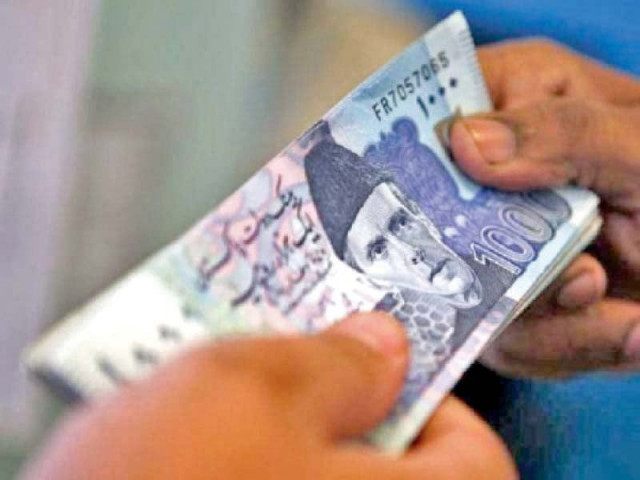Inflation plummets to 2.5-year low
Drops to 11.8%, prompts speculation about key rate adjustments

The inflation rate suddenly nosedived to a nearly two-and-a-half-year low of 11.8% in May due to a slump in food prices and some correction in fuel rates, opening a window for the central bank to rectify its monetary policy by making a major cut in interest rates on June 10th.
The Pakistan Bureau of Statistics (PBS) reported on Monday that the Consumer Price Index (CPI)-measured headline inflation rate recorded 11.8% in May compared to the same month a year ago. Apart from the high base effect, the real reduction in the prices of edibles helped pull down the inflation rate to a level that was not even predicted by the government and independent economists.
On a month-on-month basis, there was deflation in May compared to April this year, as the index slumped by 3.2%, according to PBS.
The 11.8% rate was the lowest since November 2021, when the reading had clocked in at 11.5%. Just four days ago, the Ministry of Finance had cut its inflation forecast for May to 14.5%, while the Planning Commission projected a little over 13% inflation rate.
The State Bank of Pakistan (SBP) has kept the policy rate at the historically high level of 22% despite significant room for reduction and the fact that inflation was not demand-driven. The administered increase in utility prices coupled with food supply shocks had kept the inflation rate at higher levels.
The central bank is going to announce its next monetary policy on June 10th, and it has no reason to retain the policy rate at the current level on all three counts. The next year’s average inflation target is 12.5%, the headline inflation is now 11.8%, and even the average core inflation rate is 15%.
This was the fifth consecutive month in which the pace of increase remained on a downward trajectory. However, a shock in the budget in the shape of the imposition of 18% sales tax across all goods, barring export-related ones, could give another inflationary jolt.
The International Monetary Fund (IMF) has publicly asked Pakistan to continue with the tight monetary policy, which has clouded the claim of autonomy by the central bank.
The high-interest rates have so far only benefited the commercial banks but at the cost of the national coffers, business, and the people at large. The government remains the single largest borrower, irrespective of the price, and is borrowing almost three-fourths of the total banking sector lending.
For the next fiscal year, the IMF has stated Pakistan’s cost of interest payments at a record Rs9.8 trillion, which is far higher than the government’s internal assessments. This indicates that the IMF does not see any major reduction in the interest rates in the coming months.
The Pakistan Banks Association Secretary General, Muneer Kamal, said that in 2008 only 24% of the government borrowings were aimed at financing the budget deficit, which have now grown to 83% of its total loans from the banks to fund its deficits.
Kamal further said that the banks have become a sort of pillar of the state, and this is not a good thing at all. But he argued that it was wrong to blame the banks for making profits at the expense of the government by charging high-interest rates. “It is due to the country’s economic conditions that the interest rates are elevated, and the government has to borrow to implement its budget. We are not to blame.”
The PBS data showed that food inflation decelerated in cities and rural areas. In urban centres, there was a nominal increase of 2.2% in food inflation, but it decreased by 6.3% in villages and towns, according to the PBS.
For the first time in years, the prices of various goods actually decreased in May compared to a year ago.
The average 20-kilogram price of wheat flour decreased by Rs789 to Rs1907 in May – a reduction of roughly 30%. The decrease followed a slump in wheat prices in the market that dropped owing to a glut caused by wheat imports. But it benefited the urban and landless consumers.
Similarly, the prices of chicken reduced by one-fifth to Rs347 per kg. The egg prices reduced by 10%. The cooking oil rates reduced by Rs647 or 20% to Rs2652.
This helped to pull down the overall inflation indicator to its lowest level in two and a half years.
The non-food inflation rate in urban areas slowed down to 23.6% and to 17.2% in rural areas. The gas prices were still 317% higher than the previous year, and the electricity charges were also 59% more than last year. The government is also going to further increase electricity prices from July as part of a deal with the IMF for the next bailout package.
Core inflation, which is calculated after excluding energy and food items, also slowed down to 12.3% in urban areas. It also fell to 17% in rural areas. The average core inflation is now almost 7% lower than the policy rate.
The average inflation rate also slowed down to just under 25%, but it was higher than the annual inflation target of 21%. The IMF is asking Pakistan to keep the interest rates high despite it seeing the inflation rate slowing down to 12.8% in the next fiscal year.
The Annual Plan Coordination Committee on Friday approved a 12.5% average inflation target for the next fiscal year, which the central bank is now legally bound to chase under its law.
Published in The Express Tribune, June 4th, 2024.
Like Business on Facebook, follow @TribuneBiz on Twitter to stay informed and join in the conversation.



















COMMENTS
Comments are moderated and generally will be posted if they are on-topic and not abusive.
For more information, please see our Comments FAQ